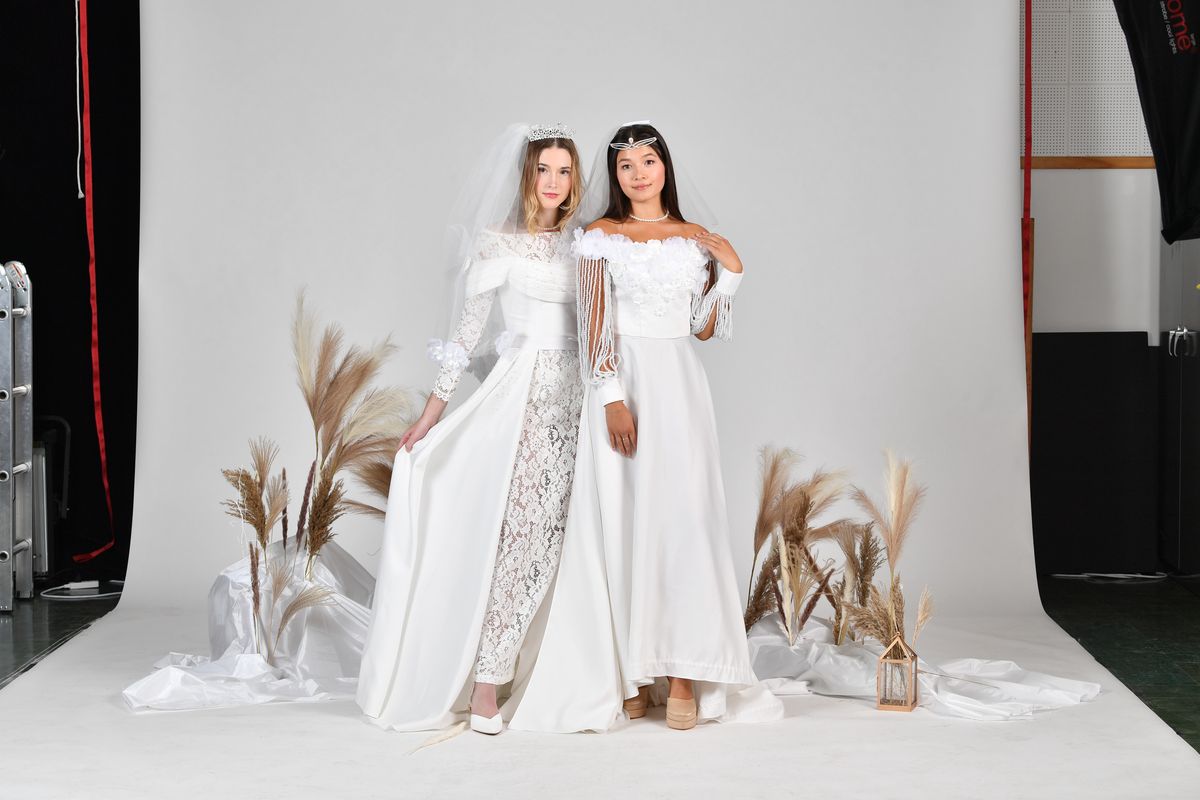WSU graduate student designs reusable wedding dresses for thesis

Mya Phan’s thesis project found its niche: environmentally conscious brides.
Her innovative, rewearable wedding dresses are sustainable, as they contain multiple outfits in one dress. This means brides can wear the dress in a long-form at their wedding ceremony, then remove the modular skirt to wear a shorter dress at their reception – perfect for dancing.
Many of Phan’s dresses come with colorful bows and embellishments that can be added on top of the dress, so brides can rewear the dress on their anniversary or for other formal events, Phan said.
Two cultural differences inspired Phan, who is from Vietnam, to create her thesis as a master’s student at Washington State University.
First, Americans have a greater interest in sustainability than in her home country, Phan said she noticed. Since she was designing dresses for American consumers, sustainability was an important aspect for marketing her products.
Second, Phan said in many Asian countries, brides don’t often buy just one wedding dress, they rent multiple dresses for the ceremony, reception and after-party.
“We can rent like three, four or even five gowns for a wedding day,” she said. “But in the U.S., every bride wants to own their dress. They think that it is like a souvenir they can pass on to their daughter, like a symbol that they will remember and keep like a treasure.”
But Phan believes it is wasteful to spend thousands of dollars on one dress that will likely never be used again, so she began thinking about what she could do as a designer to create a solution.
Then, in the first semester of her master’s program, she had the idea of what would later become her thesis: creating wedding dresses that are modular, meaning each part is adaptable and can be separated and changed.
Armine Ghalachyan, assistant professor at WSU’s Department of Apparel, Merchandising, Design and Textiles was Phan’s adviser for her project. Ghalachyan said Phan worked on her project for two semesters, even working through the summer.
“She came up with this idea, we started talking about it, we connected it to sustainability and then it developed from there,” Ghalachyan said.
Phan interviewed industry professionals and women about what is important in a wedding dress design.
In the apparel industry, a linear system is common, meaning materials become products, then the products are thrown away, Ghalachyan said. But Phan’s project follows a circular model, in which products are reused, decreasing environmental waste.
“It is estimated that 85% of apparel products and textile products still end up in landfills, so we try to remedy the situation,” Ghalachyan said.
Phan’s design aims to extend the product life cycle to be continuously usable to consumers so that products don’t get thrown away in favor of purchasing new ones.
“I think it is an amazing project,” Ghalachyan said. “Sometimes I think when we hear ‘functional design,’ we do not necessarily think ‘beautiful,’ but Mya’s designs are so great. They are amazing. They are beautiful. They look like regular wedding dresses, but they have all these hidden functions, which makes the collection even greater.”
Phan hand-sewed many details on her dresses, including intricate beading on the bodices. Originally, she created 15 to 20 designs, then decided with Ghalachyan which ones to create.
“I think the bride will love it because it brings joy, it’s cost effective and, of course, sustainability,” she said.
Phan graduated in December, and she said her dream job is to work as a fashion designer in the wedding industry.
“I want to create beautiful things for beautiful women on their beautiful day,” she said. “That is my goal.”